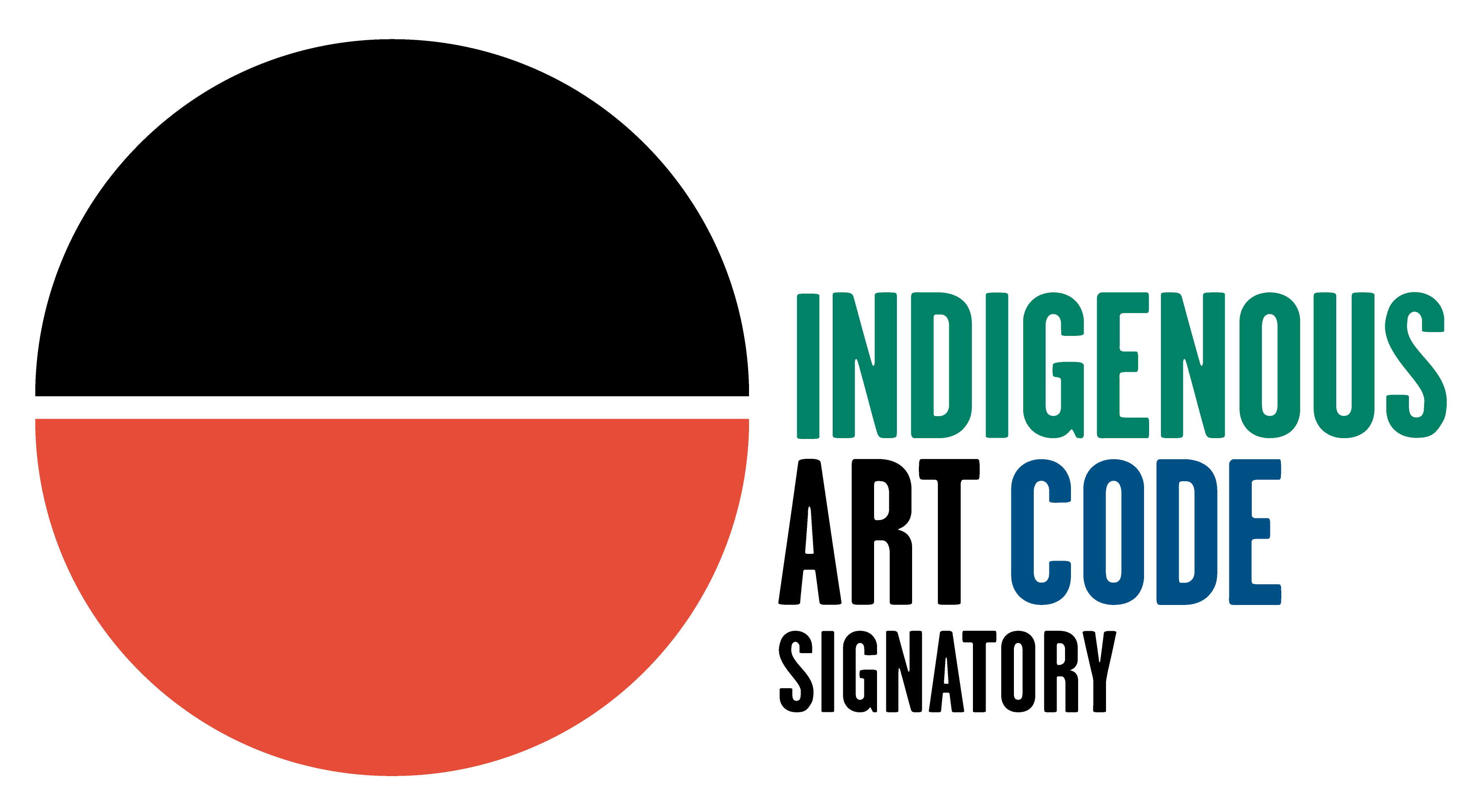Djarrayang Wunungmurra
69 3/4 x 5 1/8 in
This piece is painted in the miny’tji (sacred clan design) of the Dhalwaŋu clan which is one of the eight or so clans belonging to the Yirritja moiety (half) in North East Arnhem land. The sacred diamond design for the Dhalwaŋu clan reflects the patterning of the water streaming from the body of Ancestral Creator Being Barama as he emerged from these waters at Gäṉgaṉ, with weed hanging from his arms.
Today appropriately senior ritual participants wear sacred feathered strings from armbands, their chest painted with the Dhalwaŋu design of freshwater. These totemic ancestors of the Dhalwaŋu clan are all associated with this site at Gäṉgaṉ from which all Yirritja creation began. They are seen as embodiments of the disciples or companions of Barama and himself. Black and white dots also representing the wake of the swimming tortoise.
One of the metaphorical overviews of this work is the union between the different subgroups of the Dhaḻwaŋu clan in the ancestral cycle of regular fishtrap ceremonies they join together in celebrating. These gatherings are ceremonial but also social and educational.
The sacred diamond design generally refers to the waters around Gangan but the triangles also show the structure of the fishtrap made during Mirrawarr (early Dry Season) with Rangan (paperbark) and wooden stakes. This is the Buyku or fishtrap area which is ‘company’ land (ie. shared by all the people who live by/sing the river). The Dhalwaŋu and allied groups who participate in this song cycle and fishing activity are hunting Baypinŋa (Saratoga) as does the Gany’tjurr (Reef Heron) which they identify with as the archetypal Yirritja hunter.
This also gives reference Wurran the diver duck or the freshwater Darter. This ancestral totem for the Dhalwaŋu clan travelled over Dhalwaŋu estates following the sacred freshwaters affected by the original creators. It connects to Gapuwiyak (Lake Evella). Wurran is seen as a metaphor for an agent in death therefore also of life. From the sacred waters of Gångan, Baypinŋa the saratoga are taken by Wurran who picks the bones clean. In traditional Yolŋu society the last rites of mortuary that have the soul returned for rebirth can only be assumed when the bones have been cleansed of any tissue.


